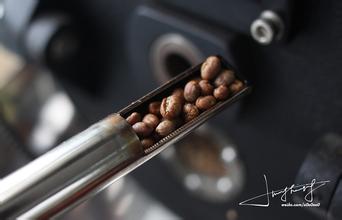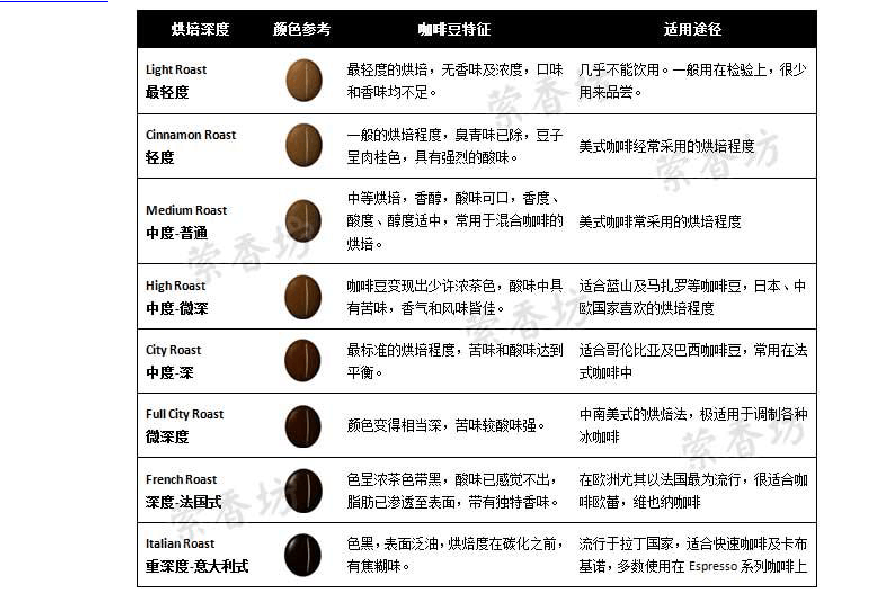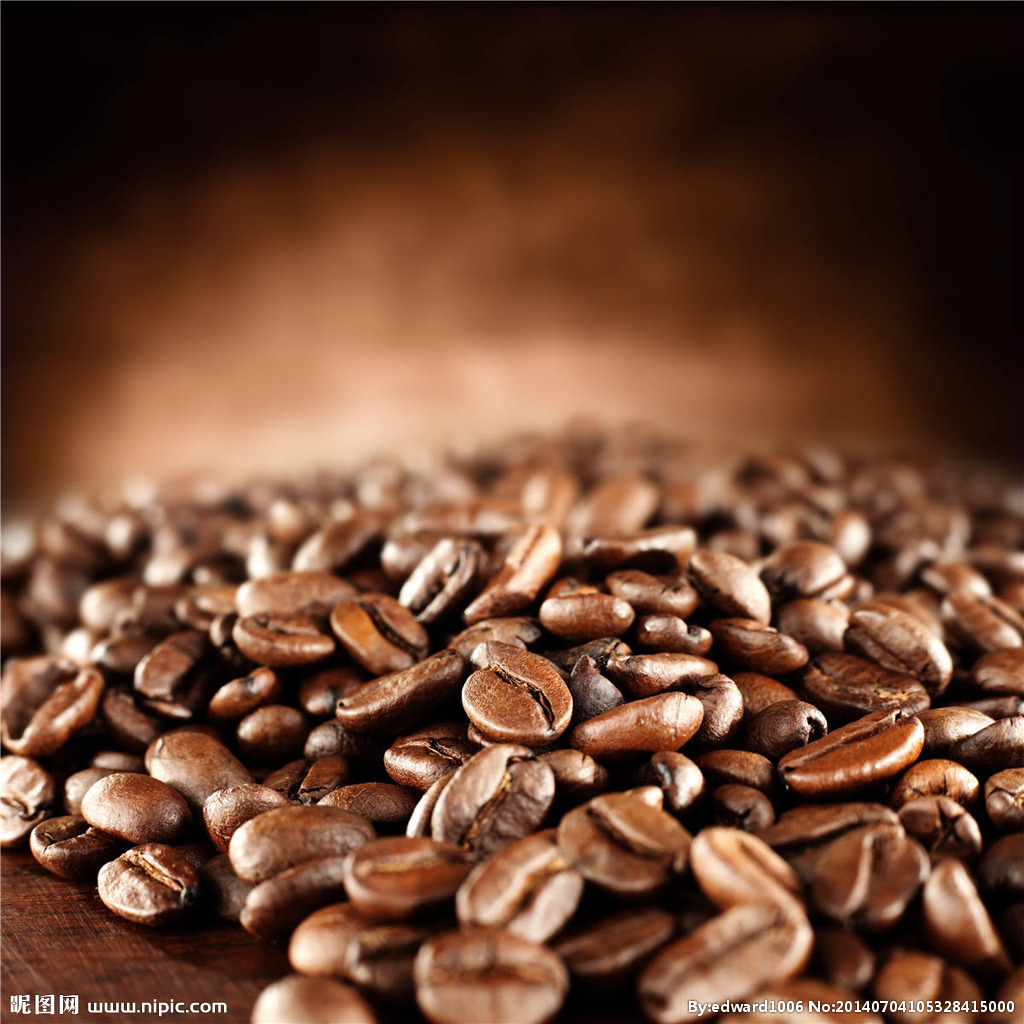Coffee roasting knowledge: how much does the weight of cooked coffee beans decrease after roasting?

Weight reduction: 15-20% weight reduction due to evaporation of water
Under this explanation, under normal circumstances, the moisture content of our coffee beans will be 10-12%.
In addition, the weight lost is generally silver, dust, material change, and the loss of carbon dioxide.
Most of the less weight is moisture.
Volume increase: due to the formation of CQ2, the volume increases by 30-60%
Composition proportion change: fat increases by 12-16%, sugar content decreases by 10%, and acid content decreases by 3%.
Check and select the coffee again.
Caffeine: caffeine in coffee beans is an alkali. People with allergies should not consume too much caffeine. Caffeine is soluble in water, so it can be extracted from raw coffee beans in one of the following ways:
1. Water-soluble method: use a cylindrical extractor in which coffee beans are placed and treated with a water-based extraction solution mixed with saturated coffee solubilizer-non-caffeine.
2. Ethyl acetate: ethyl acetate is a solvent that can also be found in nature. Use it to wash raw coffee and extract caffeine.
3. Dichloromethane: dichloromethane is a chemical solvent that volatilizes naturally when the temperature is higher than 40 ℃; it is used to wash raw coffee to extract caffeine.
4. Carbon dioxide: under critical conditions (gas / liquid, pressure = 250bar), carbon dioxide (CQ2) acts as a solvent to wash raw coffee and extract caffeine.
Production process: first put a small fire lamp on the water rack into the siphon coffee pot to grind the coffee beans, put the ground coffee powder into the upper pot as the water temperature rises below, the steam pressure causes the water to rise through the pipe and merge with the coffee powder in the upper pot. After mixing the coffee powder and water evenly with a small stick for a period of time, remove the small fire lamp under the pot to cool the air in the next pot. Vacuum can give the necessary assistance, that is, wrap the next pot with a wet towel to help the kettle cool. At this point, the coffee liquid will return to the bottom pot through the filter cloth, so that the coffee will be cooked.
Coffee has different baking time according to different varieties. What is made from lightly roasted coffee beans is the so-called white coffee. This kind of coffee is less popular and is a Malaysian specialty. At that time, I was curious and bought and drank it online, and it tasted good. The following Mantenin coffee has been roasted for a long time, the color is shiny, and when the beans reach about 400 degrees Fahrenheit, they will turn dark brown. At this time, the coffee beans begin to produce oil, a process called high temperature decomposition, when the roaster has to decide whether to continue baking, timing is very critical, once overroasted, the coffee beans will be destroyed.
A series of chemical changes occur in the process of baking. After about 5-25 minutes of baking (depending on the temperature selected), the green coffee beans lose some humidity and turn yellow. In this process, the coffee beans will swell, changing from a strong, high-density raw bean to a low-density fluffy state. After this process, the coffee beans will about double in size and begin to show a light brown after stir-frying. After this stage is completed (after about 8 minutes of baking), the calories will be reduced. The color of the coffee soon changed to dark. When the preset baking depth is reached, cold air can be used to cool the coffee beans in order to stop the baking process.
Baking is roughly divided into shallow baking (Light), medium baking (Medium), urban baking (City) and deep baking (Deep). Light roasted coffee beans: will have a strong smell, very crisp, high acidity is the main flavor and slightly mellow. Medium-roasted coffee beans: have a strong mellow, but also retain a certain degree of acidity. City-baked coffee beans: the surface is dark brown, the acidity is replaced by slight bitterness, and most of the flavor has been destroyed. Deep-roasted coffee beans: dark brown in color and oily on the surface. For most coffee beans, the alcohol content increases significantly and the acidity decreases. In fact, roasting coffee is a way of processing food. The roasting of professional coffee is the personal expression of the roaster. Just started to contact with professional coffee.
Reduced weight of roasted coffee (how much less weight of cooked coffee beans after roasting) discount on the weight of roasted coffee beans and raw beans.
Source:
Wen Honggang's blog
Important Notice :
前街咖啡 FrontStreet Coffee has moved to new addredd:
FrontStreet Coffee Address: 315,Donghua East Road,GuangZhou
Tel:020 38364473
- Prev

Coffee beans roasting knowledge: coffee beans present different taste and flavor characteristics under different roasting degrees
The taste and flavor characteristics of coffee beans under different roasting depths The roasting quality of coffee beans directly determines the aroma of coffee beans. Even if the green coffee beans are good, the roasting is not good, but you can't get good coffee cooked beans, and of course you can't make good coffee. Only with good coffee beans, after proper roasting, can we process good coffee beans, and it is possible to make good coffee.
- Next

As a coffee lover, how to identify the quality of cooked coffee beans is the most important knowledge.
Choose fresh coffee beans. When buying, pay attention to whether the color of the beans and the size of the particles are the same. Good coffee beans are shiny and have a strong aroma without being mixed with peculiar smell. No matter what kind of coffee beans, freshness is an important factor affecting the quality. When shopping, grab one or two coffee beans and chew them in your mouth with crisp sound (indicating that the coffee is not damp) and teeth and cheeks.
Related
- What is the meaning of lactic acid fermentation with coffee bean treatment?
- How to judge the state of foam by sound?
- How does the latte pull out the unicorn pattern? Come to get for a little trick to improve the flower pull!
- Will flower pulling affect the taste of the latte?
- Do you know the history of coffee?
- The difference between honey treatment and sun washing what is raisin honey treatment?
- What kind of milk can a novice use to make coffee foam to keep the foam longer? The correct method and skills of milking tutorial sharing
- Why do washed coffee beans taste sour? Flavor characteristics of washed Coffee
- Introduction to the skill of how to practice the size and height of water injection around the circle of hand-brewed coffee
- How do beginners practice coffee flower drawing from scratch?

